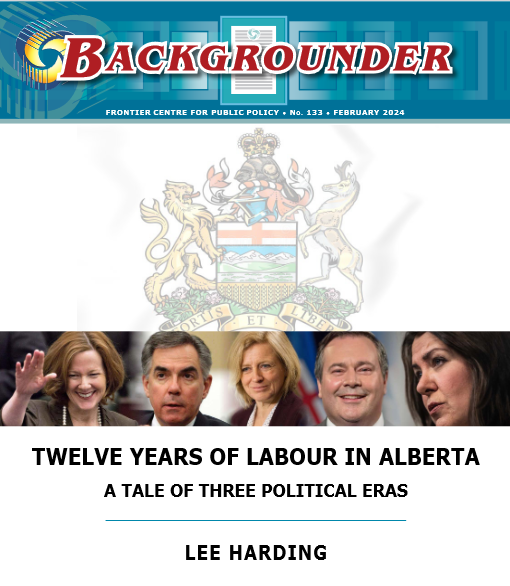This paper uses Statistics Canada data to examine labour growth in Alberta in its recent political eras. The first time in view is the last part of the Progressive Conservative era from October 2011 forward, led successively by premiers Alison Redford and Jim Prentice. This was followed by the NDP term of Rachel Notley that began in May of 2015. The United Conservative Party era began with the election of Jason Kenney to the premiership in April of 2019 and continued through Danielle Smith. This era continues but the scope of statistics this paper has in view ends in November 2023.
• Alberta’s employed population grew by 17.1 percent from October 2011 to November 2023, but the working-age population grew by 26.1 percent. Growth of employees was one-third less than the growth of the working-age population. The growth of both the working age population (4.9 percent) and employment (1.9 percent) was weakest during the NDP term.
• In all political eras, Alberta outpaced Saskatchewan in worker growth, but Saskatchewan’s gap between working-age population growth and employee growth was less than Alberta’s.
• From October 2011 to November 2023, the combined category of agriculture, forestry, fishing, and hunting, and the combined category of health care and social services were the only ones where the growth in total wages and salaries exceeded the Canadian average.
• During this period, total wages and salaries grew 40 percent in Alberta and 70.2 percent in Canada. (Since May 2015, the growth was 13.4 percent versus 46.8 percent, respectively.)
• As well, wages in mining and oil and gas extraction grew by 13.7 percent in Alberta while it grew by 24.2 percent in Canada. In Alberta, wages in agriculture, forestry, fishing, and hunting grew by 82.5 percent, followed by the wages of federal bureaucrats grew by 65.8 percent.
• In Alberta, non-participation rates in the workforce grew by 63.9 percent for men and 39.8 percent for women compared with 26.2 percent and 18.2 percent respectively, nationally.
• In Alberta and nationally, the percentage of employees in the public sector has grown at the expense of the self-employed. During the UCP era, Alberta has excelled beyond its provincial neighbours and national averages for growth in the working age population, the labour force, numbers employed, and full- time employees, while the numbers unemployed have dropped in comparison with the national average.
Read the full report here: FB133_ABeras_FB2224_F2 (21 pages)
Lee Harding is Research Fellow for the Frontier Centre for Public Policy.



